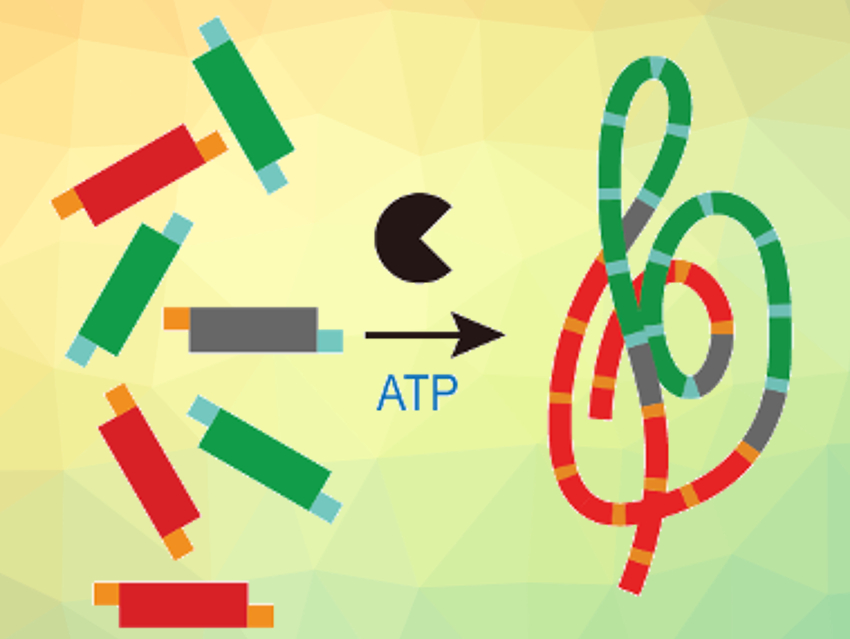Living organisms adapt to changing environments by transforming into different states. It can be challenging to mimic this behavior in synthetic materials.
Andreas Walther and colleagues, University of Freiburg, Germany, have developed a strategy for the reconfiguration of functional materials, so-called “polymer transformers”. The team first used three different DNA monomers (pictured in red, green, and grey) to build a fully mixed copolymer. The polymerization is mediated by an enzyme (T4 DNA Ligase, pictured in black), and “powered” by adenosine triphosphate (ATP).
The team then used two “interdigitated enzymatic reaction networks” (iERNs) to convert this homogeneous copolymer into polymers that are strongly enriched in one monomer (pictured below). The team added two different restriction endonuclease (REase) enzymes (pictured in green and red) in varying ratios. These enzymes can cut specific bonds between the DNA monomers. The enzyme ratio acts as the input signal for the transformation of the polymer into enriched forms.

The polymers can, thus, transform into the desired states adaptively, based on the ratio of enzymes. After complete degradation into the monomers, the original copolymer can be recreated by polymerization, and the system can be reused. The strategy could be useful for the design of adaptive and intelligent materials systems that can reconfigure their function.
- Polymer Transformers: Interdigitating Reaction Networks of Fueled Monomer Species to Reconfigure Functional Polymer States,
Mo Sun, Jie Deng, Andreas Walther,
Angew. Chem. Int. Ed. 2020.
https://doi.org/10.1002/anie.202006526


![Synthesis of [c2]Daisy Chains via Mechanochemistry](https://www.chemistryviews.org/wp-content/uploads/2025/04/202504_RotaxanesWithSolidStateMechanochemistry-125x94.png)

